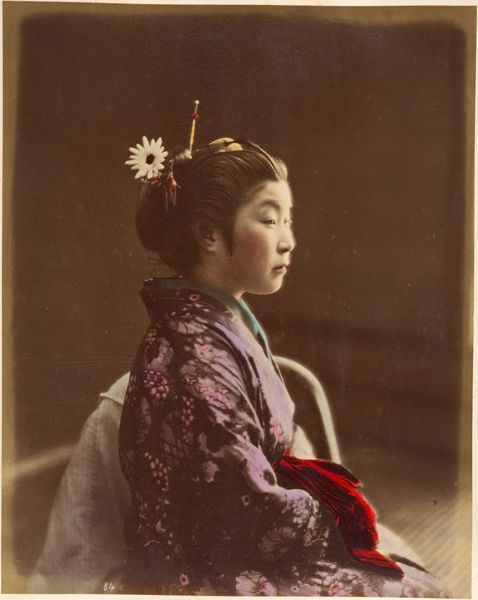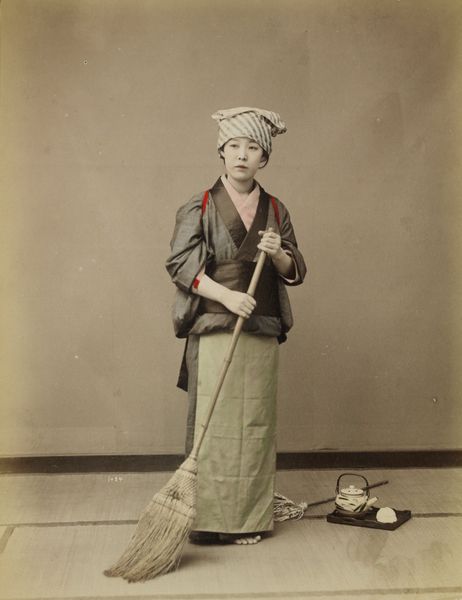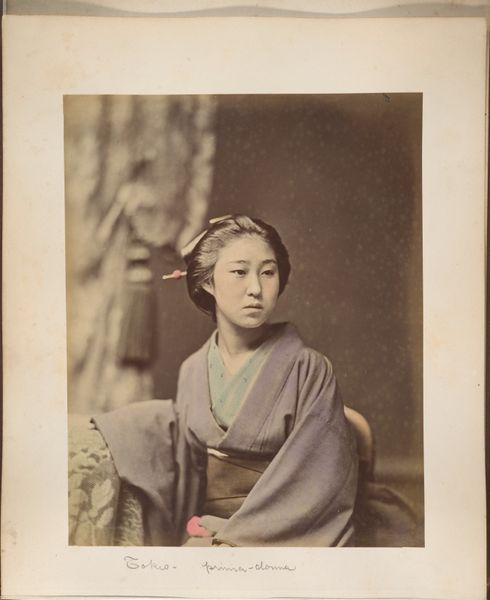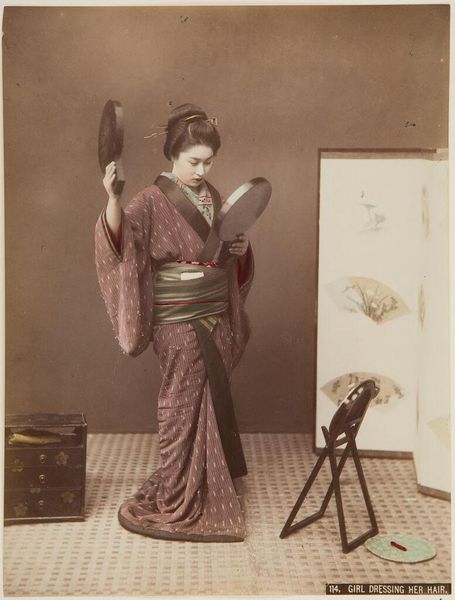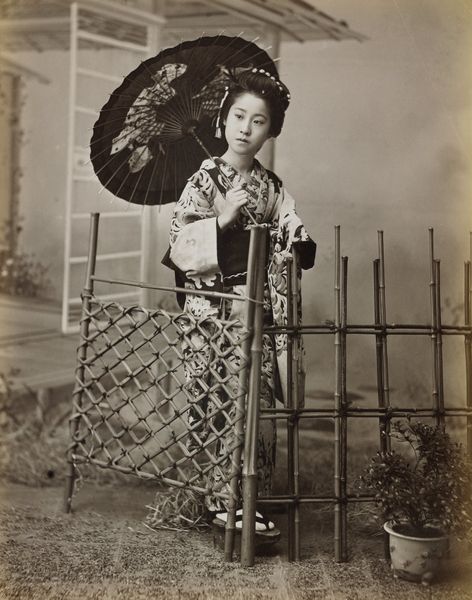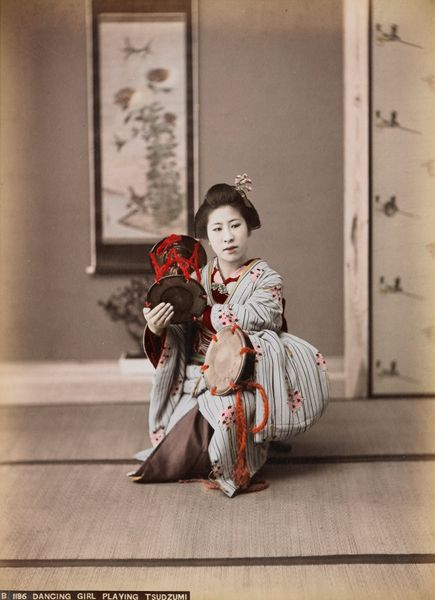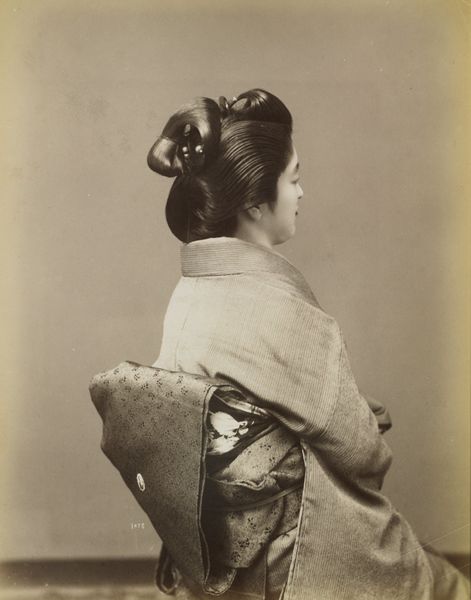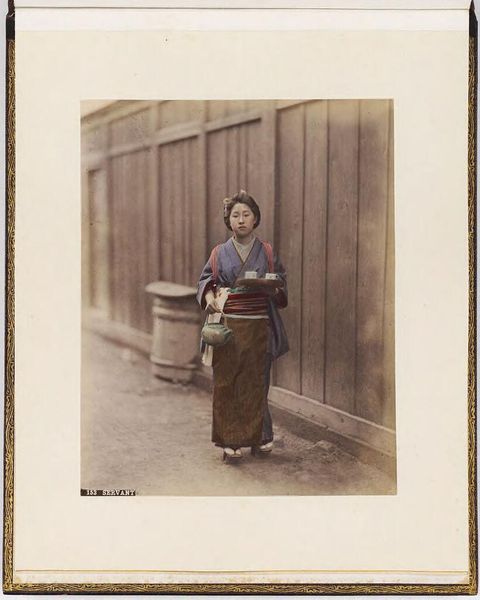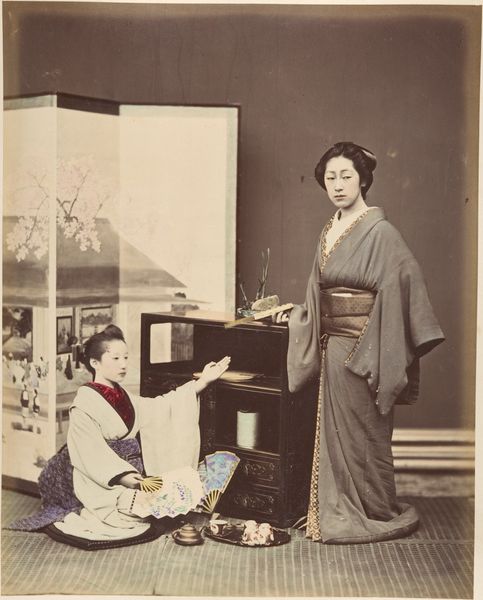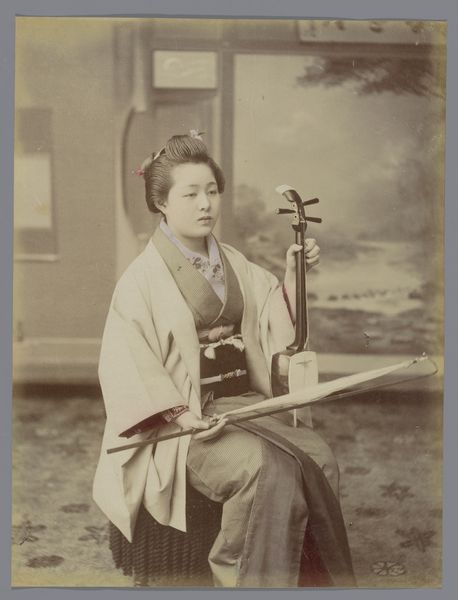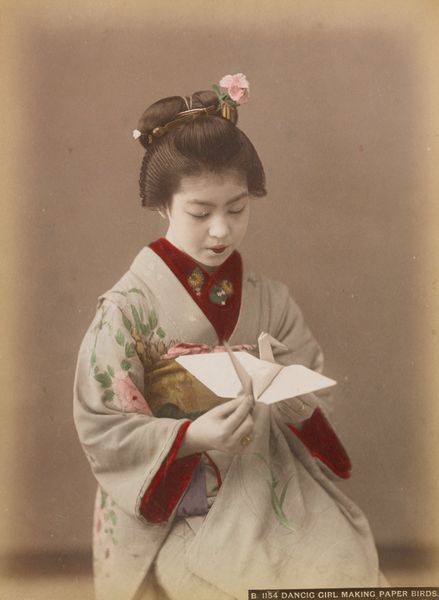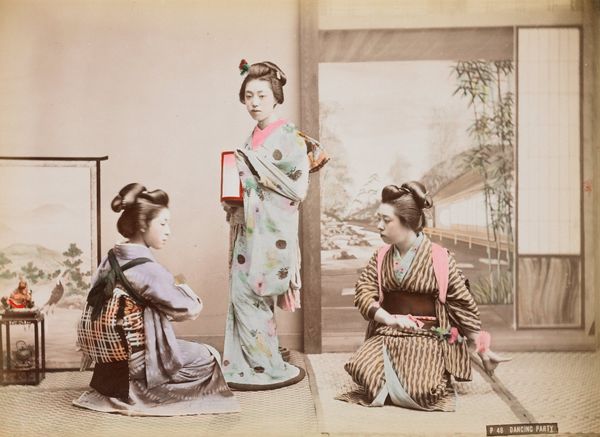![[Japanese Woman in Traditional Dress] by Suzuki Shin'ichi](/_next/image?url=https%3A%2F%2Fd2w8kbdekdi1gv.cloudfront.net%2FeyJidWNrZXQiOiAiYXJ0ZXJhLWltYWdlcy1idWNrZXQiLCAia2V5IjogImFydHdvcmtzLzQwZmY2NmQ4LThkODctNDVlYi04ODcwLTE4OGVmZDhkNmJkYS80MGZmNjZkOC04ZDg3LTQ1ZWItODg3MC0xODhlZmQ4ZDZiZGFfZnVsbC5qcGciLCAiZWRpdHMiOiB7InJlc2l6ZSI6IHsid2lkdGgiOiAxOTIwLCAiaGVpZ2h0IjogMTkyMCwgImZpdCI6ICJpbnNpZGUifX19&w=3840&q=75)
Dimensions: 25.2 x 19.7 cm (9 15/16 x 7 3/4 in.)
Copyright: Public Domain
Curator: Here we have an albumen print dating from the 1870s, "[Japanese Woman in Traditional Dress]", credited to Suzuki Shin'ichi. It’s currently held at the Metropolitan Museum of Art. The sepia tones give it such an antique feel. Editor: It certainly does. I'm immediately drawn to the deliberate staging and how that impacts my perception. It feels both intimate and constructed simultaneously. Curator: Indeed. The materials themselves, the collodion process layered on paper, speaks to the burgeoning market for exotic imagery at the time. The photographic print as a commodity traded across cultures, you see? Editor: And those cultural exchanges! Consider how the details become imbued with meaning. For instance, the bamboo fence, the lantern—elements that represent Japan in the Western imagination, and the woman, her costume and expression serving as vessels for projecting orientalist fantasies. Curator: Precisely! And think of the labor involved in setting up the scene, preparing the chemicals, and the subject who, despite our assumptions of passivity, surely brought her own experiences into this encounter with modernity. The print becomes a tangible object of that exchange, reflecting both the process and the cultural context. Editor: It is fascinating how photography immortalizes specific symbols – the kimono pattern, her hairstyle, even the angle of her head. These things carry coded information and perpetuate, but also solidify, the image of an era for subsequent viewers. Curator: It makes you wonder about the photographer's intent too, not just as an artist but also as a craftsman making a living in a rapidly globalizing world. The chemistry and physical process are embedded into what you consider the cultural meaning, which can then have very physical implications as trade and representation shift based on images like this. Editor: A powerful blend of the staged and the serendipitous, really. Curator: Ultimately, the image pushes us to investigate not only what we see but how this photo as a material object was created and consumed within its time. Editor: Yes, understanding its symbolism within our evolving framework will allow viewers to reinterpret, critique, and engage with a much deeper appreciation.
Comments
No comments
Be the first to comment and join the conversation on the ultimate creative platform.
